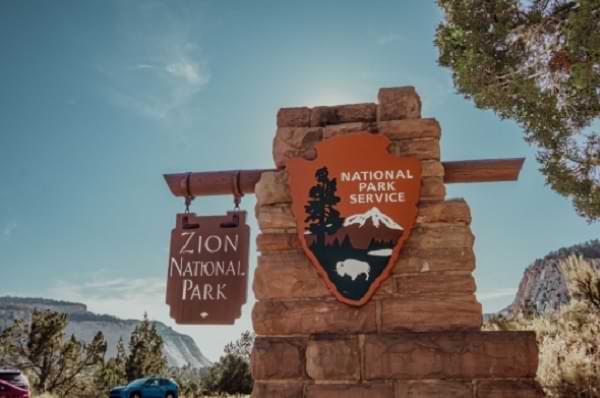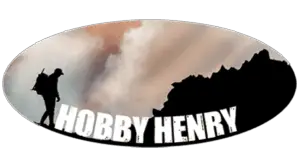
Zion National Park is actually Utah’s first National Park with a very vast and beautiful landscape. This location would look great from an aerial point of view, but can you fly a drone here?
The use of remote-controlled equipment (including but not limited to helicopters, drones, and other aircraft-based equipment) within Zion National Park is prohibited. Only drone pilots with special permission, emergency services, and government officials may fly in National Parks such as Zion.
Keep reading to find out how you can get the footage you need and other locations in Utah to fly your drone.
How To Legally Fly Drone OVER Zion National Park?
Zion National Park is known as Utah’s first National Park. Visitors who are visiting this amazing park are always in for an amazing treat with stunning views that will stay with them for the rest of their lives.
However, National Parks are very sensitive areas and need to be approached with caution at all times. Zion is a National Park, so you can’t just fly a drone as a recreational pilot.
The National Park Services(NPS) created a law that states that you can’t take off or land in a National Park.
Thanks to this law, many drone pilots have been disappointed when planning trips to Zion and finding out that they can’t actually fly their drone there.
However, there is a way around this law that is actually perfectly legal. It is actually perfectly legal to take off and land outside of a national park, which will then give you the ability to fly over the park.
As long as you do not take off or land within the National Park, you shouldn’t have any problems with the Park Rangers.
This has even been recognized by the NPS and they have addressed this matter in an article on their website here.
The pilots that do know about this loophole tend to try and find an open space near the National Park to take off and land from.
Then they can fly over the National Park, capture what they need to, and land outside safely.
All the steps that I have just mentioned above are all completely within the law and do not go against any laws set by the NPS or the FAA.
However, like any loophole, there is a risk. Taking off from outside the park but still flying over the National Park can still be dangerous.
Because you are still flying your drone, you still run the risk of potentially crashing the drone.
If something goes wrong and the drone malfunctions, you could crash inside the park, which could put you in a lot of trouble with the NPS and even law enforcement.
Another risk you will have to deal with is the potential to lose sight of your drone.
And as you should know, losing sight of your drone is against the FAA rules and regulations.
If you are not familiar with the drone laws keep reading to find out which ones you need to pay attention to.
What Are The FAA Drone Laws?
As a drone pilot, you need to be familiar with all the FAA drone laws, as these are the laws that have been set for all pilots around the whole country.
No matter where you go in the United States, these laws will always need to be followed.
The FAA allows pilots to register a drone on their website known as the FAADroneZone website.
Drone Rules For Recreational Flyers/Hobbyists
- You must only fly for recreational purposes.
- Your drone must weigh less than 55lbs, and you must register the drone if it weighs more than 0.55lbs.
- You must register your drone with the FAA.
- You should not fly directly over people.
- You cannot fly over a moving vehicle.
- Always fly your drone below 400 feet.
- Never interfere or fly near emergency response efforts.
- You must never fly near other aircraft.
- Must fly in class G airspace.
- The drone must always remain within visual line-of-sight.
- You must follow community-based safety guidelines.
These rules need to be followed at all times. If you ignore the rules set by the FAA, you could be heavily fined or much worse.
Utah Drone Rules and Regulations
Because Zion National Park is located in in Utah, these are the drone rules and regulations that you need to pay attention to.
These laws were created by the Utah State Legislature.
Utah has five state-wide laws concerning the use of drones in the State.
Law 01:
This law prohibits a person from intentionally, knowingly, or recklessly chasing, actively disturbing, or harming livestock with a UAV.
Known as: HB 217 // 2017
Law 02:
This law makes a few things clear, such as:
- Requires law enforcement to create an official record when using drones to provide them with information regarding why the drone was used and any data acquired.
- It also allows for law enforcement to conduct unrelated to a criminal investigation.
- It makes it a class B misdemeanor to fly a drone that is able to carry a weapon or has a weapon attached.
- Modifies criminal trespass offense to include drones entering and remaining unlawfully over private property with specified intent.
Known as: SB 111 // 2017
Law 03:
This law allows law enforcement to use drones to collect data at a testing site and to locate a lost or missing person in an area where a person has no reasonable expectation of privacy.
Known as: HB 296 // 2015
Law 04:
This law controls the use of drones by state government entities, establishing that a warrant is required for any law enforcement agency to “obtain, receive or use data” from the use of drones.
Known as: SB 167 // 2014
Law 05:
This law requires law enforcement to obtain a warrant before using drones in a place where an individual has a reasonable expectation of privacy.
Known as: SB 196 // 2014
Why Are Drones Banned in National Parks?
Drones are amazing pieces of technology that allow professional photographers as well as regular people to take their photography to new heights, Literally!
However, drones can be a bit distracting as they usually make a high pitched noise.
Some people can view this as a little irritating and this can disturb the people around it at times.
Drones have been banned from National Parks for a long time now since 2014 to be exact.
This is due to multiple incidents that occurred in multiple National Parks throughout the United States.
Drones have been known to cause disturbances to wildlife and visitors due to the loud noise they make and being a visual distraction, negatively impacting the overall experience for everyone visiting.
Another reason why the NPS had to reconsider the inclusion of drone within Park limits is because of the negative impact on the quality of life of the different animals that are located within the park.
Some enthusiasts have argued that they can simply avoid the more populated areas of the Park.
However, this doesn’t help with the animals as animals are located all over the park and would not be avoidable.
When the drone ban was introduced by the NPS back in 2014, drones were only just starting to become a popular hobby amongst enthusiasts.
Now in 2021, droning is one of the most popular hobbies out there, so just imagine how many drones would be flying around National Parks if the ban was not put in place.
What Are The Consequences of Flying a Drone in a National Park?
There are a lot of things that can happen to you if you break the laws that have been set by the FAA and NPS.
Here is what you could face:
- You could receive up to six months of jail time.
- You could also receive a fine that equals up to $5000!
Park rangers have full authority to implement the ban and assess any violations on a case-to-case basis, if you are lucky you could get off with just a warning.
A lot of people tend to think that the NPS is not really serious about enforcing this ban and continue to try to push their luck.
However, I feel like I should inform you that there have been many people to feel the full force of the consequences of this ban.
